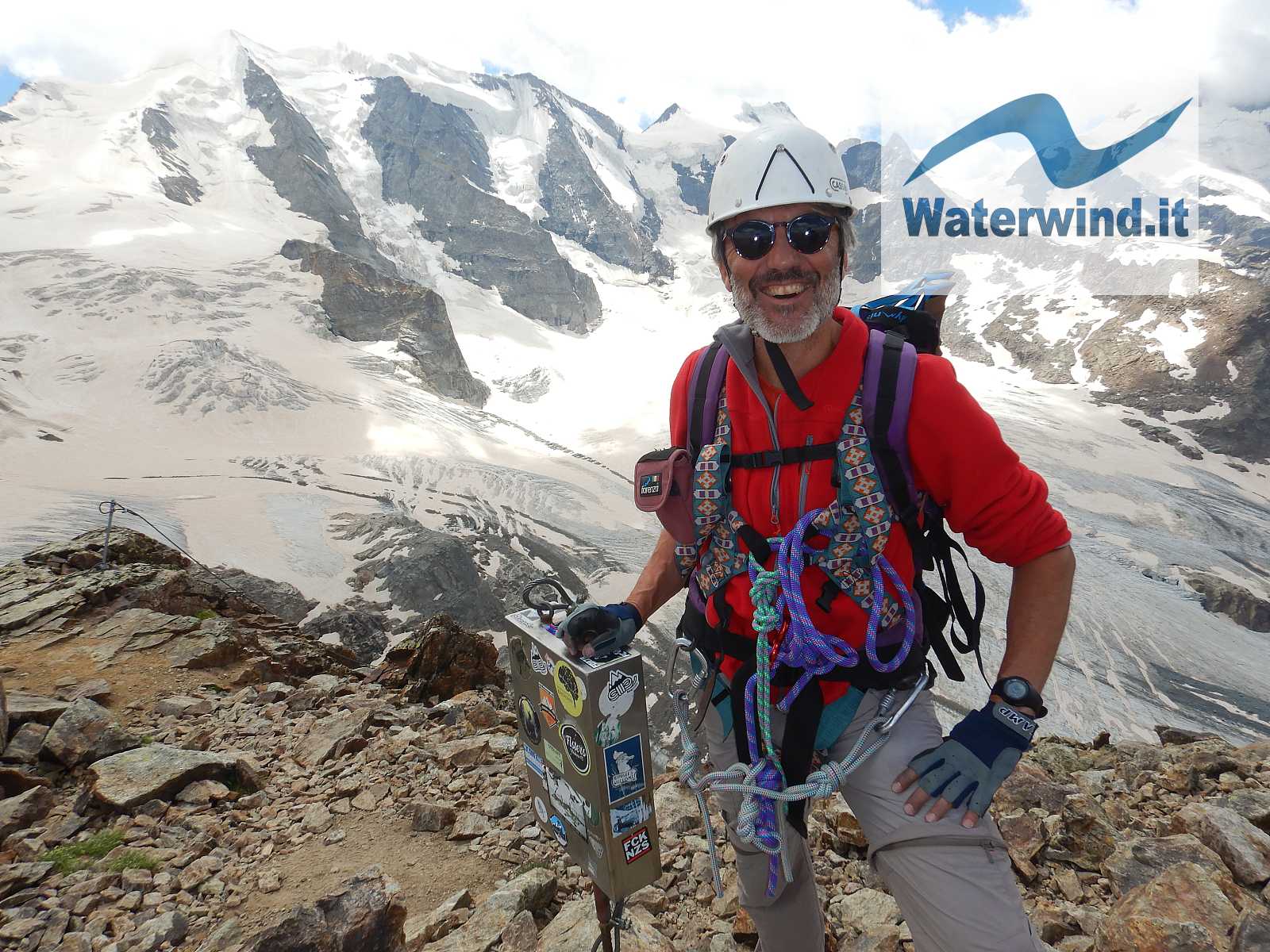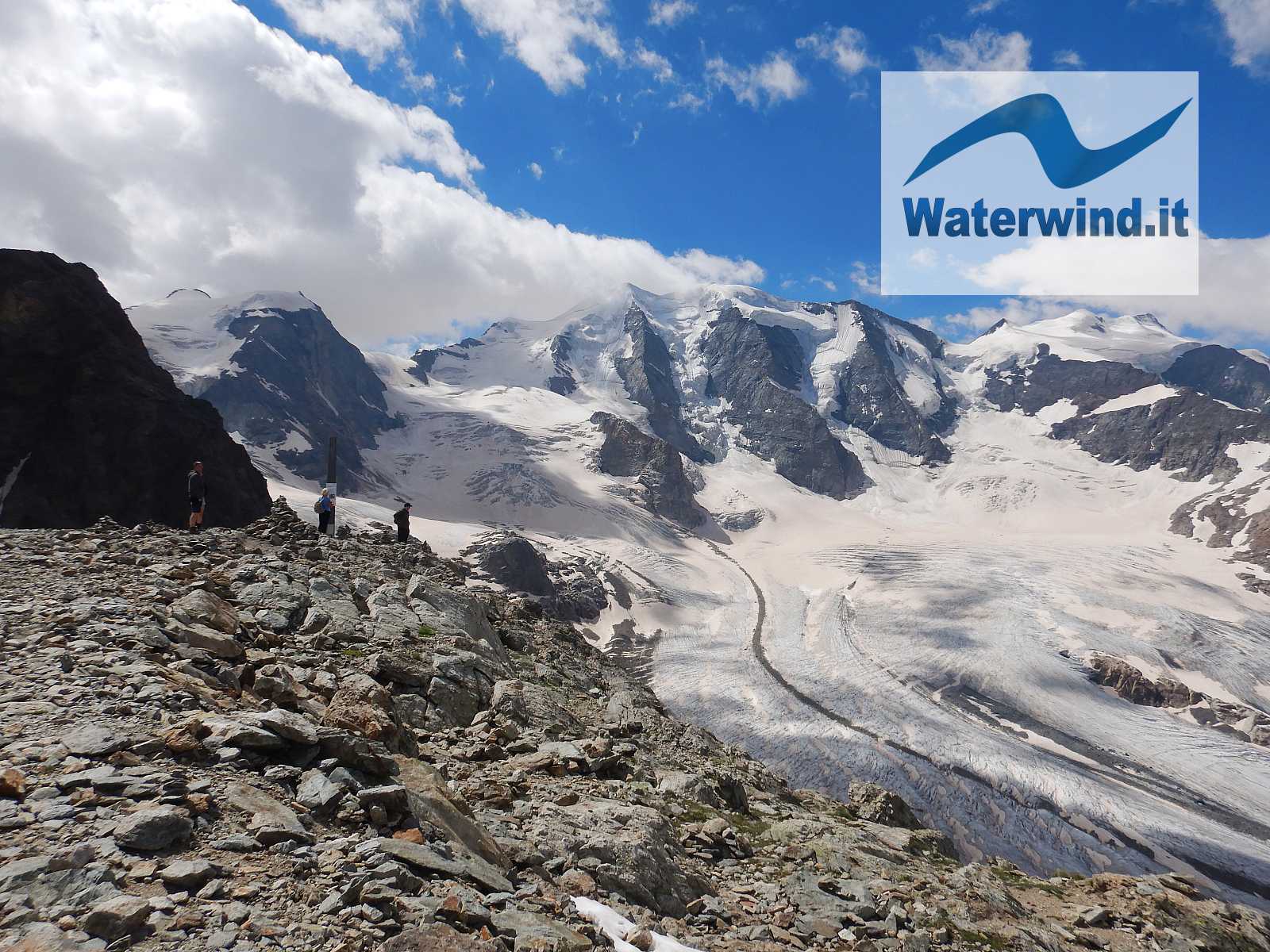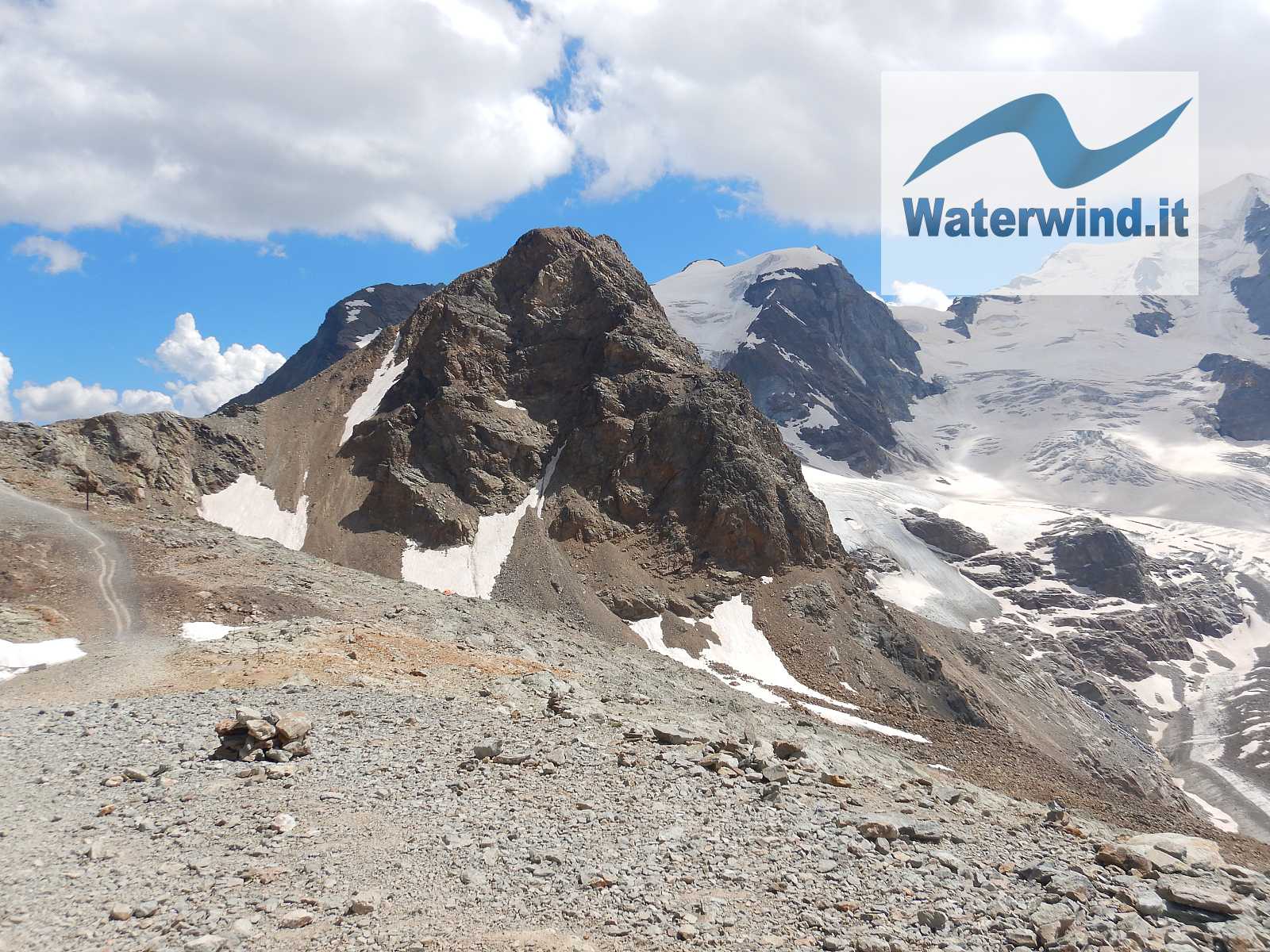I also got this satisfaction: I did the Piz Trovat via ferrata, in Engadine, Switzerland, which lets you climb in front of the magnificent peaks of the Bernina group, and its imposing glaciers.
Via Ferrata Piz Trovat (3146 m), Engadin, Switzerland
I had some doubts about doing this via ferrata. I was wondering, in fact, if the arrival at the mountain station of the Diavolezza cable car, with the incredible view that can already be enjoyed from the terrace of the Berghaus, would have not canceled out a good part of the wonder and beauty that can be appreciated from the via ferrata. And I will tell you right away that this is not the case, because the via ferrata also gives you further emotions, and other fantastic points of view on these incredible mountains.
To do this beautiful climb, which I have studied for a long time, I took advantage of a weekend, in which I escaped from the heat of Monza and went camping in Maloja, also enjoying a nice windsurfing session in Silvaplana, on Friday afternoon. The Engadine is a fantastic place, because, in addition to the beauty of the valley and its mountains, it offers the possibility of doing so many outdoor activities.
Sunday morning, July 28, 2024, therefore having noted the good weather conditions, and the favorable forecast, I headed by car to the valley station of the Diavolezza cableway, just before the Bernina Pass. The return ticket was 44 CHF. The cableway takes you to the 2978 m of the Diavolezza. From here, you can easily reach on foot the 3065 meters of the Sass Queder, equipped for a high-altitude barbecue!
The Piz Trovat, on the other hand, appears to you as a dark tooth shaped mountain, which appears evident to the South East. In front of you, the Bernina, Piz Palù, and the Cambrena peaks stand out, from which soft, creamy, and dazzling glacial blankets descend, which then break into lively seracs, and finally into extensive glacial tongues that insinuate themselves into the valleys below (Pers and Morteratsch glaciers).
To reach the start of the two via ferratas (I, the easiest, and II, the most challenging), instead, take the trail that starts to the left of the panoramic terrace, indicated by the signs. And don't do as I did, who, in my eagerness to start climbing, initially went down the covered conveyor belt (part of the ski lifts), and then went back down on the right path. The trail takes you down among rocks and boulders, and then climbs back up, with difficulty, in about 30 minutes, to the start of the via ferrata, clearly indicated by a sign with instructions.

Not a Supporter? Ouch, ouch, ouch! The full preview reading of this article is reserved for Waterwind.it Supporters, who contribute to keeping it alive, and making it more beautiful! To become a Supporter, click here.
I was relatively worried about the descent, because on the Diavolezza cable car website, it is described with these words: "The descent follows the north-eastern ridge, crossing a rugged and gravelly area. The passages, which are in part very steep, require a sure step".
I can immediately reassure everyone. The descent is steep, but it is absolutely not exposed. I have crossed, in the Dolomites, unequipped sections on via ferratas that were much worse. On Sunday, I began the descent by crossing a snowfield of about 50 meters. The snow was soft enough to allow the boots to sink in and get an adequate grip along the track, and its slope was not very steep. Some guys who were going down before me started playing with snowballs, confirming the tranquility of the track in this point. After the snowfield, the path has a steep slope (40-50%), with several rocky steps. It is a bit tiring, but absolutely not dangerous. For me, trekking poles were essential, to protect my knees. However, in 30 minutes you reach the saddle under the NE side of Piz Trovat at about 3000 meters, and then with a simple traverse towards WNW, in another half an hour you return to the Berghaus. If you want, the descent path can also be taken to reach the top of Piz Trovat, without doing the via ferratas. But you have to be like an ibex.....
I then descended to the valley, again with the cableway, having to return home. It was really hard this time too to leave the green and cool of the Engadine, with its wide and relaxing views.
Once again, this Swiss valley gave me enchanting days.
Have a good climb. Fabio Muriano
Click here to enjoy the entire slidegallery of the via ferrata
The video of my hiking
Without your Support, Waterwind wouldn't exist. Become our supporter! If you want to advertise with us, read here, or conctact us.






